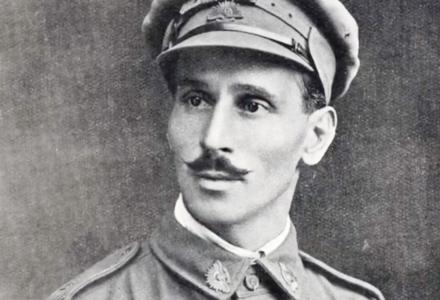In October 1918, HMAT Boonah sailed out of Fremantle harbor. She carried a cargo of over 1,000 soldiers, all destined for the battlefields of Europe. The Boonah was the last such troopship to leave from Australia. Three days from Durban, the ship’s wireless received a message. The fighting was over. An Armistice had been signed.
The Boonah was ordered to proceed to Durban, take on coal, and return directly to Australia. But the deadly ‘Spanish flu’ got there before her. Infection spread like wildfire through the cramped conditions of the ship. Men complained of sore throats, constricted chests, and difficulties breathing.
Twenty nurses volunteered to tend to the sick and the dying.
They endured a slow and staggered voyage across the baking heat of the Indian Ocean. At home, the authorities panicked. Fearing the arrival of a pandemic, they denied the Boonah permission to land. For weeks the vessel was diverted from one port to another. One newspaper described the ship as ‘a floating hell’.
After a public outcry, the Boonah was finally ordered back to Fremantle. Men from the stricken vessel were ferried ashore to the quarantine station at Woodman Point. There they would be kept in strict isolation. Over the next twelve months, no fewer than thirty-one patients would die.
Their nurses died with them. Despite every precaution, three nurses were carried off by the disease. Others fell seriously ill, victims to infection or primitive attempts at inoculation. An Army chaplain quickly likened their sacrifice to that of the battlefield, ‘the casualties being equivalent to those sustained in … action’.
But it wasn't just Army nurses who risked their lives. Hilda Williams, a civilian nurse from the comfortable Perth suburb of Claremont, was one of several women who volunteered to work at Woodman Point. Within weeks she was dead.
All four of the women who died of flu were buried in the bushlands of Woodman Point. Their bodies were taken out from the mortuary in the cool of the evening, and sunk deep in the sand near the graves of the men they cared for. In time, the remains of the flu victims at the quarantine station were reverently relocated to military cemeteries in Perth. As with every military casualty, the families of nurses were entitled to choose an epitaph and told their daughters’ graves would be cared for ‘in perpetuity’.
But Hilda Williams was not considered a military casualty. She had served as a civilian—a Voluntary Aid Detachment—and as such had none of the rights, pay or entitlements of a regular army nurse. Her grave still lies in the scrub marked by a simple wooden cross. She was twenty-five years old at the time of her death.
Hilda Williams’ story underscores again the inequalities of remembrance. It also alerts us to a tragedy that followed the aftermath of war. Spanish flu claimed the lives of around fifty million people—around five times more than all the military casualties of war put together. The pandemic was the worst the world had seen in several hundred years and brought the war home to Australia in a way no one had expected. Our dominant memory of the Great War honours the sacrifice of soldiers, men who fell on distant battlefields. But Spanish flu visited pain and loss on civilian populations far from the fighting.
For full attribution of sources, suggestions for further reading and an extended version of the story itself see ‘This striking case of courage and devotion: Hilda Williams’ in Bruce Scates, Rebecca Wheatley and Laura James, World War One: A History in 100 Stories (Melbourne, Penguin/Viking, 2015) pp. 126-128; 357.



